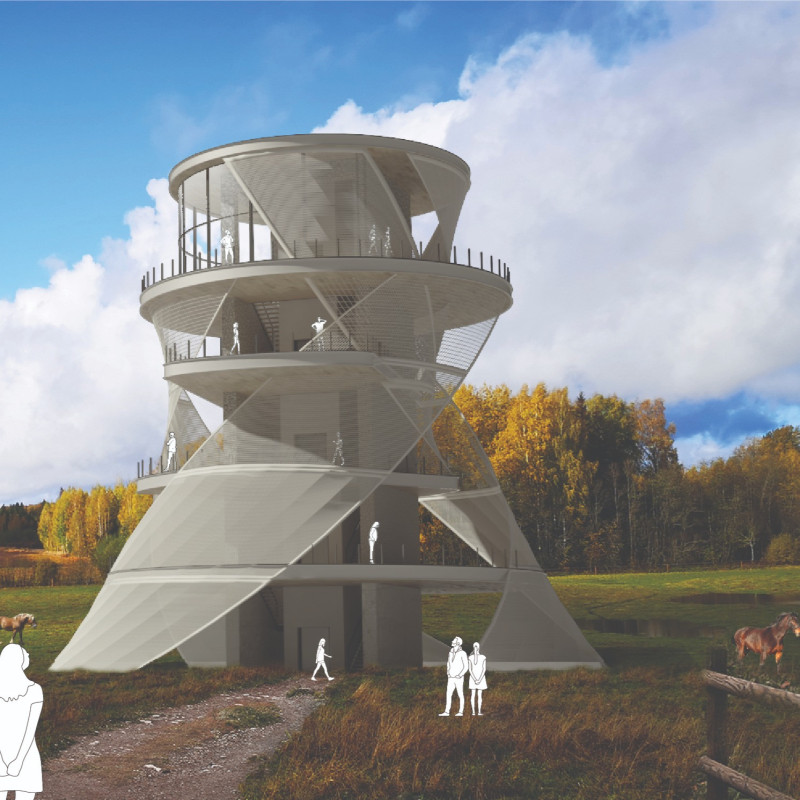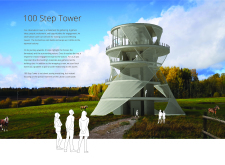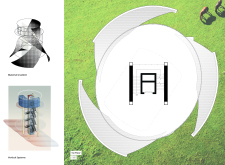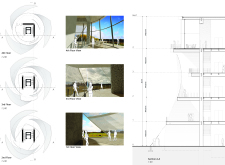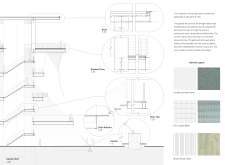5 key facts about this project
The design of the 100 Step Tower is characterized by its innovative spiral form, which gradually ascends while offering panoramic views as visitors climb. This layered approach to the structure allows individuals to experience a range of perspectives as they move upward. Each level of the tower is designed with large openings that frame specific views of the surrounding landscape, integrating the exterior environment into the user experience. The design emphasizes the importance of elevation in creating a more engaging observation point, inviting visitors to explore both the interior and exterior spaces.
Key elements of the project include its material selection and structural design. The use of locally sourced stones serves to connect the tower to the landscape, providing a sense of permanence and solidity at the base. The upper sections are wrapped with a PVC-coated mesh that allows light to filter through while maintaining a degree of translucency. This thoughtful approach to materials not only enhances the aesthetic qualities of the tower but also contributes to its durability and environmental cohesion. Rustic wood floors within the structure add warmth and contrast to the more industrial elements, creating a welcoming environment that invites exploration.
Unique design approaches in the 100 Step Tower draw from the local context and aim to promote sustainable practices. By utilizing materials that are readily available in the region, the project minimizes its ecological footprint while celebrating the beauty of the surrounding landscape. The interaction between the visitors and the environment is also emphasized through the integration of spaces that encourage both social gathering and solitary reflection. The vertical movement through the tower mimics a journey, taking users through a series of curated experiences that change with elevation.
The architecture of the 100 Step Tower not only fulfills its functional purpose as an observation space but also acts as a catalyst for community engagement. The design fosters a connection between people and nature, prompting visitors to pause, reflect, and engage with their surroundings. The spiral pathway leads to various levels, where social interaction can occur, in addition to private contemplation fostered by the views provided at each stage. This layered narrative is essential for understanding the tower's role in the landscape.
In summary, the 100 Step Tower stands as a thoughtful representation of architectural design that prioritizes both aesthetic and experiential qualities. Its innovative form, careful material selection, and integration with the landscape highlight its purpose as a bridge between nature and human experience. For those seeking deeper insights into the architectural plans, sections, and designs of this project, a closer examination of its presentation will yield a comprehensive understanding of the ideas and intentions that drove its creation. Exploring this project further offers an opportunity to appreciate the significance of architectural practices that emphasize environmental context and user engagement.


